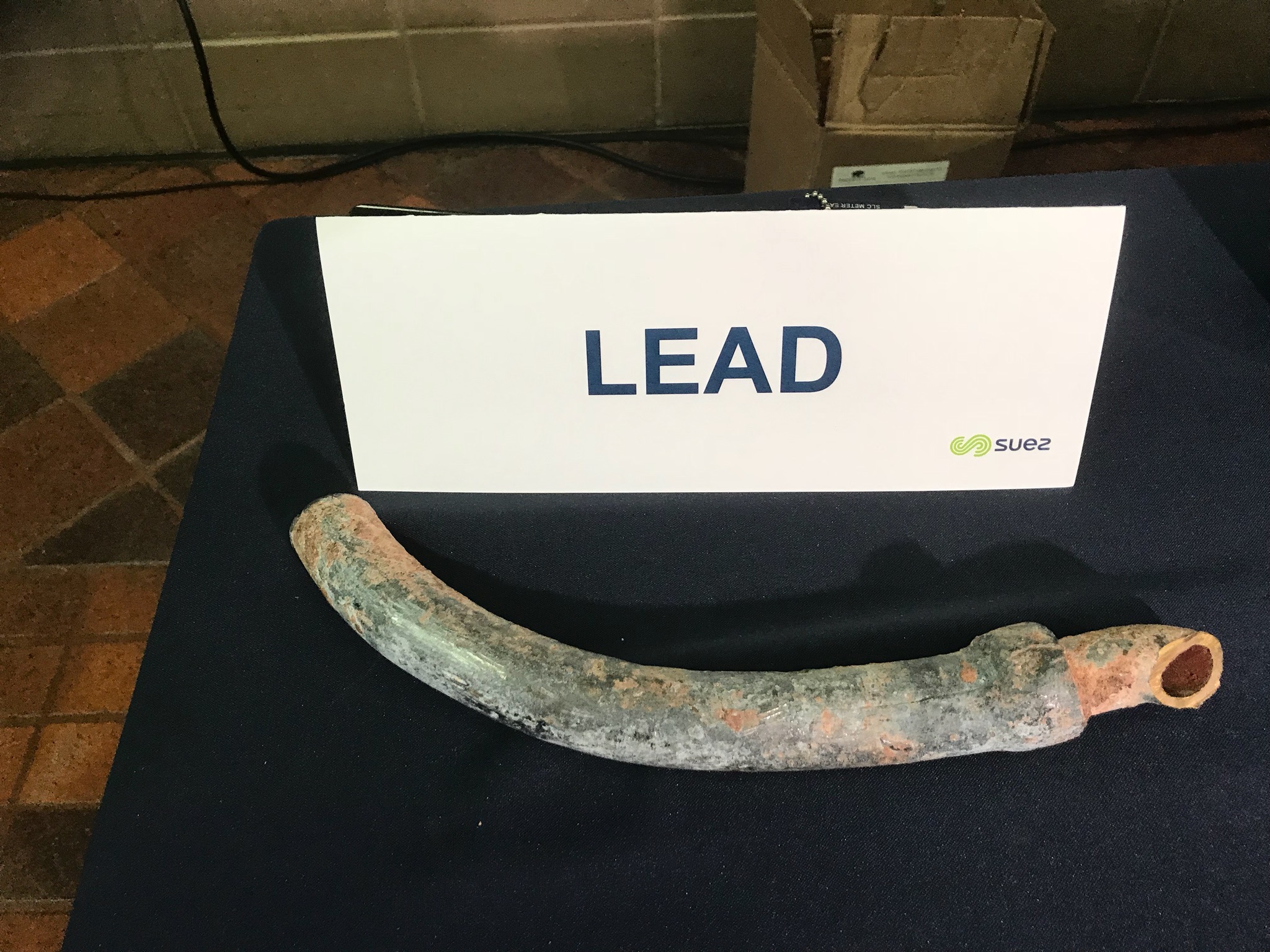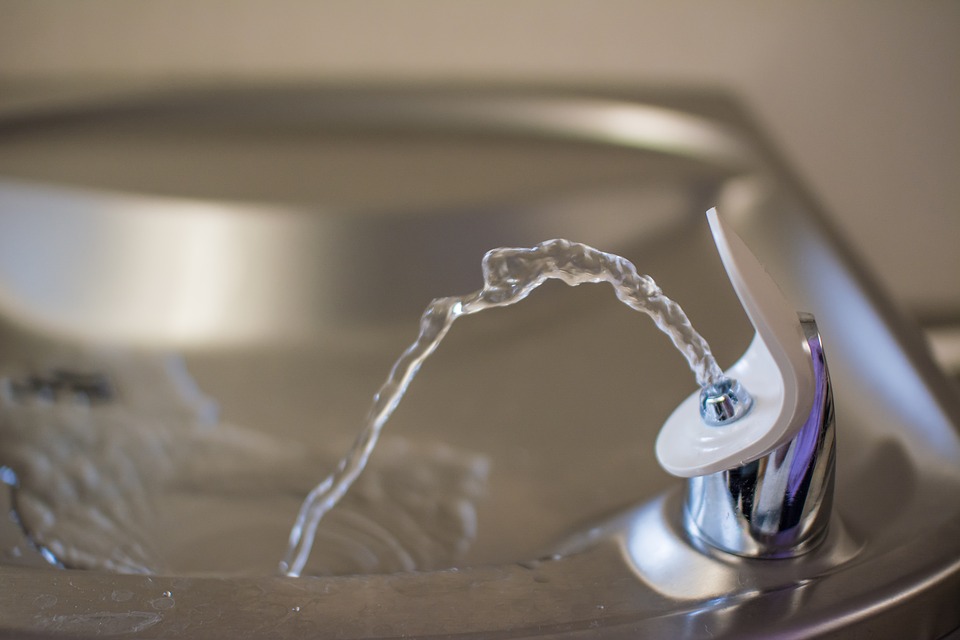
TRENTON—A state Department of Education spokesperson said April 26 that “more details need to be worked out” before $100 million in approved grant funds are made available to help get the lead out of affected school water systems.
Suez Water has begun replacing 25 percent of its lead service lines on an expedited schedule but area school districts are on hold on lead as the state DOE works out funding guidelines for a bond act voters approved in November 2018 to help improve schools’ water infrastructure statewide.
DOE spokesman Mike Yaple said by email on Friday, “As you know, the bond act called for funding for multiple projects. State statute contemplates an application process for all projects funded from these bond proceeds.”
Yaple said DOE must consult with the state Department of Environmental Protection on water infrastructure project funding.
“We are still involved in that process,” Yaple said. He added he expected to have more news “soon.”
The federal EPA says there is no safe level of lead in drinking water. The American Academy of Pediatrics recommends remediation if school readings register more than one part per billion.
Most local school administrations tested water in 2016 and 2017 following issuance of state DOE guidelines, posting results online and remediating problem areas.
The funding holdup occurs just as public pressure builds for replacement of lead service lines—whether utility- owned or customer-owned—and follows studies last year that revealed gaps in school drinking water testing, as well as posting results online.
Meanwhile, clean-water advocates are calling on NJDOE to let districts and the public know what’s going on with public funds approved as part of a statewide ballot question called “Securing Our Children’s Future Bond Act.”
“We have no idea what’s going on with the [bond] funds,” said Chris Sturm, managing director of policy and water for New Jersey Future, a nonprofit organization that compiled its own database of state school districts and lead testing results. The state DOE did not compile a database, she said.
“This [lead in school drinking water] is definitely a problem we can solve,” said Sturm, who noted no DOE representatives appeared at a roundtable held in February to discuss the funding.
Sturm said state law requires school districts test drinking water quality once every six years and that she is not aware if DOE is compiling data on the testing results or actions taken to remedy high lead levels.
The $100 million is part of a $500 million “Securing Our Children’s Future Bond Act.” Both clean-water advocates and school officials are anxious to see grant submission guidelines soon so needed replacement projects for lead service lines, connections and lead-lined connections and hardware can be expedited where necessary.
Gottheimer proposal
In mid-2018, U.S. Rep. Josh Gottheimer (D-NJ-5) proposed a bill to require New Jersey school districts test school drinking water annually and report findings on their websites.
The state Department of Education rule passed in 2016 requires testing once every six years, with districts required to test and report results by July 2017. Districts had one year from DOE rule adoption to test all drinking fountains and water supply sources used for food preparation.
‘Sounding the alarm’
“No parent should have to fear that their child is being poisoned where they’re supposed to be educated; we must make sure that every school tests their drinking water for lead and takes the steps needed to keep our kids safe. That’s why I introduced the Lead Free Schools Act earlier this year to help schools test their water and improve their drinking water infrastructure. I thank Environment New Jersey for sounding the alarm on this critical issue,” Gottheimer said in April 2018.
A 2018 report from Environment New Jersey found only 47 of 76 Bergen County districts provided complete results on their websites last year, and while most districts only reported to the state if individual samples tested exceeded 15 parts per billion for lead, the group reported overall lead levels at about 5 to 6 parts per billion per district.
The group noted 35 districts in Bergen County with at least one reading or more above 15 parts per billion of lead.
“The results, which are required to be accessible to the public, showed that 55% of the drinking water outlets in these schools showed some level of lead contamination,” said the Environment New Jersey report last year.
NJDOE lead testing rule
“Every district must make all test results available at the school facility and on the district’s website. The regulations also require notification to the NJDOE, as well as to parents, in any instance in which positive results over the established level are reported. The notification should describe the steps taken to immediately end the use of each drinking water outlet where water quality exceeds the permissible level, as well as measures taken to ensure that alternate drinking water has been made available to all students and staff,” said NJDOE’s website.
Every year, districts are required to submit a two-page “statement of assurance” to NJDOE to certify compliance with the NJDOE lead in drinking water regulation, states the website.
No examples of the 2018–2019 statement were provided on the website.
Water testing and actions
At Northern Valley Regional High School-Demarest, nine of 47 samples (about 19 percent) taken tested over the federal lead in drinking water standard of 15 parts per billion.
These ranged from a low of 17 parts per billion at the boys’ locker room water cooler to 533 parts per billion in a water cooler outside room E-109.
In response, the water cooler use was stopped and signage posted saying “Do Not Drink—Safe for Handwashing Only” and the water cooler was disconnected and put out of use. The nine drinking outlets testing over federal lead standards included sinks, water coolers, a hose connection and a “bubbler” fountain outside of gym that was disconnected.
A bubbler fountain is a drinking water fountain that emits a stream of water when a button is pushed.
“Lead in drinking water, although rarely the sole cause of lead poisoning can significantly increase a person’s total lead exposure, particularly the exposure of children under the age of 6. EPA estimates that drinking water can make up 20% or more of a person’s total exposure to lead,” said an online notice next to NVOT school test results.
At Pascack Valley Regional High School District, the district reported only 7 of 55 samples taken (about 13 percent) tested above the 15 parts per billion federal action level for lead in drinking water. The offending outlets included three kitchen faucets and three “bubbler” fountains.
The high lead readings ranged from 18.7 ppb to 266 ppb. All were shut down and replaced during the summer, said Superintendent. Eric Gundersen in an online letter.
“High levels of lead in drinking water can cause health problems. Lead is most dangerous for pregnant women, infants, and children under 6 years of age. It can cause damage to the brain and kidneys, and can interfere with the production of red blood cells that carry oxygen to all parts of your body,” Gundersen wrote.
Last year, Gottheimer urged Gov. Phil Murphy to support new rules requiring school districts to conduct lead testing and publish results online, which did not happen in some North Jersey districts.
Gottheimer said he wanted all districts to yearly submit new testing results for posting and called for federal funding to help local schools upgrade water supply infrastructure. The state DOE only reimburses the cost of water testing once every six years, he said.
$2.3 billion tab statewide
At a recent state hearing, the state Department of Environmental Protection’s top official said it estimated is would cost $2.3 billion to replace approximately 350,000 customer lead water service lines and the state does not have funding.
In January, Murphy said more than 1.5 million state residents get drinking water from lines containing elevated lead.
Suez Water of North America, Haworth, has begun an expedited lead service line replacement program to remove 25 percent of utility-owned lead service lines—about 2,400—in at least eight towns with high numbers of lead lines.
Suez also identified other towns with lower numbers of lead service lines needing replacement, including Old Tappan, River Vale and Alpine.
The water utility, which serves 200,000 customers in 57 Bergen and Hudson county municipalities, recently proposed a customer lead service line replacement program to the state Board of Public Utilities to remove a customer line for $1,000.
Generally, Suez said, such replacement costs $3,000 to $8,000, and their proposal charges the cost difference as a surcharge to customers.
As of April 23, the BPU had not placed the proposal on its agenda. If approved, only customers where Suez was doing work to replace a known lead service line would be notified to participate in the $1,000 customer line replacement program, a spokeswoman said.
School testing ‘a no-brainer’
“Testing for lead in our school’s drinking water should be a no-brainer. The crisis of tackling lead in our school drinking water should be our state’s top infrastructure priority because our children’s development is at risk,” said Environment New Jersey Director Doug O’Malley, in a statement.
“We need to fix the source of lead in our schools by removing lead from our environment—including any lead service lines and water fountains that register positively for lead,” he added.
Calls to superintendents in the Pascack Valley and Northern Valley regional high school districts for updates on possible water infrastructure improvements needed were not returned by press time.

